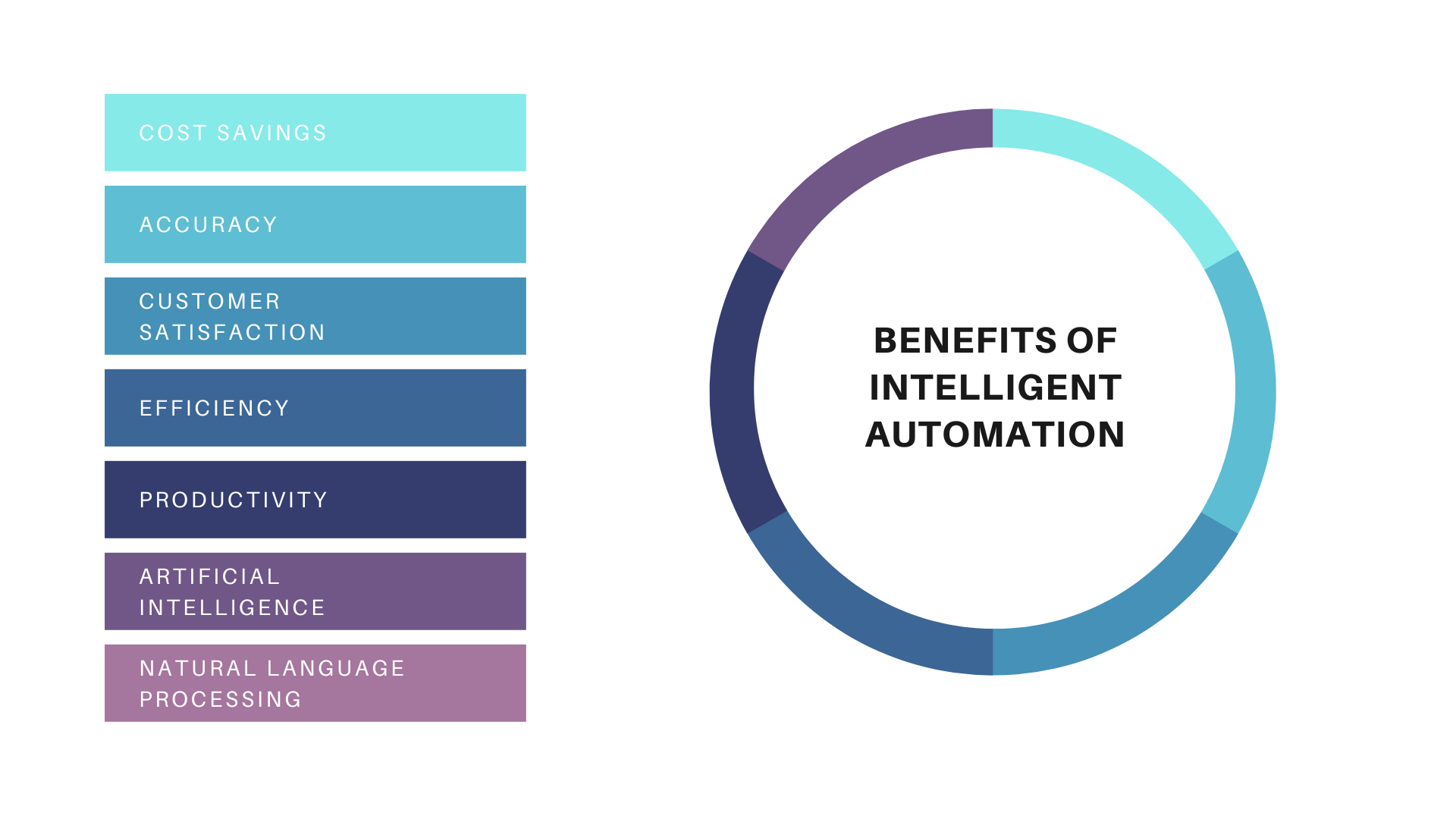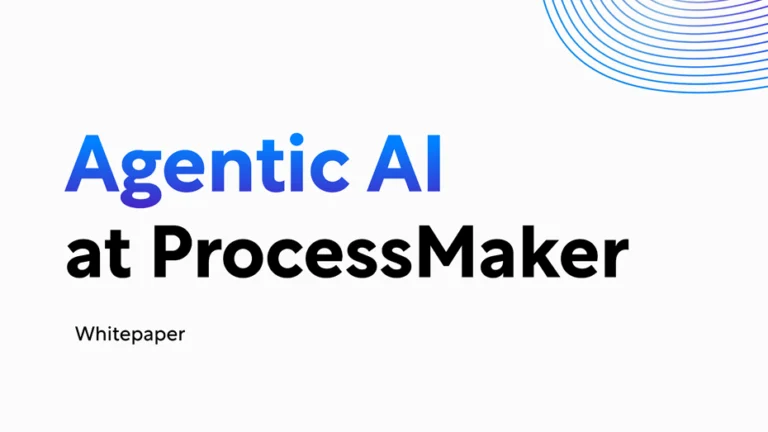What’s the first thing that comes to mind when someone mentions IPA? Probably a beer, right? But there’s another meaning behind this popular acronym. IPA also stands for “intelligent process automation.”
IPA, more often referred to as intelligent automation, covers a vast sea of use cases. Automation is a game-changer for all types of organizations, effectively reducing costs and increasing efficiency.
According to Pascal Bornet in his book Intelligent Automation: Welcome to the World of Hyperautomation, “IA, also called hyperautomation, is a concept leveraging a new generation of software-based automation. It combines methods and technologies to execute business processes automatically on behalf of knowledge workers. This automation is achieved by mimicking the capabilities knowledge workers use in performing their work activities.”
In doing so, it increases productivity and facilitates more free time for human workers to focus on higher cognitive roles. Because of its convenient, growing popularity, your organization may be asking, “Should we automate this?” After all, why work harder when you can work smarter?
Robotic process automation (RPA) helps businesses move beyond basic task improvement and operate in new ways. However, now that we have business process automation (BPA) and, better yet, intelligent automation, we’re better equipped to create business solutions, reduce costs, and improve efficiency.

Technology has come far in the past decade- making business processes more effective by reducing the time spent on manual tasks. We started with Six Sigma and moved on to business process management (BPM). These tools helped improve manual processes like reviewing patient records, student applications, invoices, and more. Automation is now part of decision-making and workflow for rules-based systems.
What is intelligent process automation (IPA)?
Intelligent automation offers the functional benefits of RPA combined with artificial intelligence (AI), natural language processing (NLP), and optical character recognition (OCR).
As a result, IPA can mimic human learning and activities such as critical analysis. Because of this, IPA differs from RPA in its capability to adapt and evolve.

IPA can also drive digital transformation. For instance, RPA can deliver functional benefits almost instantaneously. It automates large volumes of repetitive work and management processes, equating to a bot workforce with the capacity to work 24/7. Thus, human team members can work on higher-value tasks.
In some instances, human workers can finally do what they were hired to do or focus on upskilling. Moreover, there are minimal obstacles to deployment, and RPA offers the potential for quick wins and quantifiable returns.
However, on its own, RPA is not a transformative automation solution. If a variance is added to any process, scalability is impacted. RPA can handle a wide variety of tasks, but the upward potential is limited.
What is robotic process automation (RPA)?
In the simplest terms, RPA is a technology that creates programmed virtual “bots” to execute repetitive, rules-based business tasks. RPA bots can perform any predefined and time-intensive task. As a result, RPA can relieve human workers of heavy workloads and save thousands of hours in productivity and labor costs. RPA ensures faster implementation and cycle time of business processes with fewer errors, which can induce immediate and strategic ROI.
Concerning intelligence, RPA is at the lower end of the spectrum as it is a programmed virtual agent. Therefore, RPA is more useful for collecting data and executing fundamental analysis. It also helps to take care of the low-hanging and time-consuming tasks such as handling preliminary work for large data sets.
Furthermore, RPA isn’t well-versed in assessing unstructured documents, like handwritten notes and receipts. In contrast, intelligent document processing (IDP), a feature of some BPA platforms, is adept with unstructured documents, making it a more intuitive option for organizations looking to automate processes.
Complement RPA with IPA
Both RPA and IPA can automate a wide variety of processes, but you also get the ability to respond to variances. When you bridge RPA functions into AI, you get dynamic interactions with transfer learning. The concept of transfer learning is where technology can use the model from one process and apply it to another without human intervention or more programming. Then, IPA can handle both volume and variance, self-managing and reducing time spent on human intervention or programming.

Yet, IPA doesn’t just automate your new and existing processes and streamline your workflows. It can make them more intelligent and offer detailed insights for making better business decisions. People can use IPA to have better interactions with machines and solve business problems that humans alone can’t solve.
IPA adoption
Intelligent process automation focuses on learning and improving processes with every interaction. Yet, when adopting IPA, it’s critical to identify the right business cases for automation. Strategy and purpose are necessary. Answers to the following questions should help:
- Is the activity too time-consuming for your human employees?
- Is the process complex, involving multiple steps and human interaction?
- Are there other options for streamlining the process?
Where can you implement IPA? Let’s take a look at a few real-world use cases:

Insurance verification and billing
In any healthcare environment, insurance verification is a lengthy and painful process that is mostly manual and has the potential for a bevy of costly errors. If information data is not correctly verified, it can lead to delayed payments, rejections, and more. On the other hand, IPA can utilize intelligent document processing (IDP) to extract and analyze data. Moreover, IPA can interface with a wide range of systems to send and receive pertinent data throughout the organization.
Quote-to-Cash
Traditional sales processes are filled with data entry errors and multiple customer complaints about turnaround time, channels, customer service, and more. You can simplify the sales cycle using the Quote-to-cash system and automation.
IPA can use NLP and OCR to extract data from emails, orders, invoices, and faxes because much of the data is structured. RPA bots can deliver collected data from one system to another. Therefore, you can enhance forecasting with better data analysis while mitigating errors.
Which technology is better for your business?
RPA and IPA are not competitive; they are complementary technologies. IPA takes over where RPA faces limits. You can use RPA to address exchange points between segments of the workflow. As mentioned, a platform with IDP may get you further than it would with RPA.
Curious about intelligent process automation (IPA), workflow automation, and intelligent document processing (IDP)? Chat with us so we can find the best fit for you.





